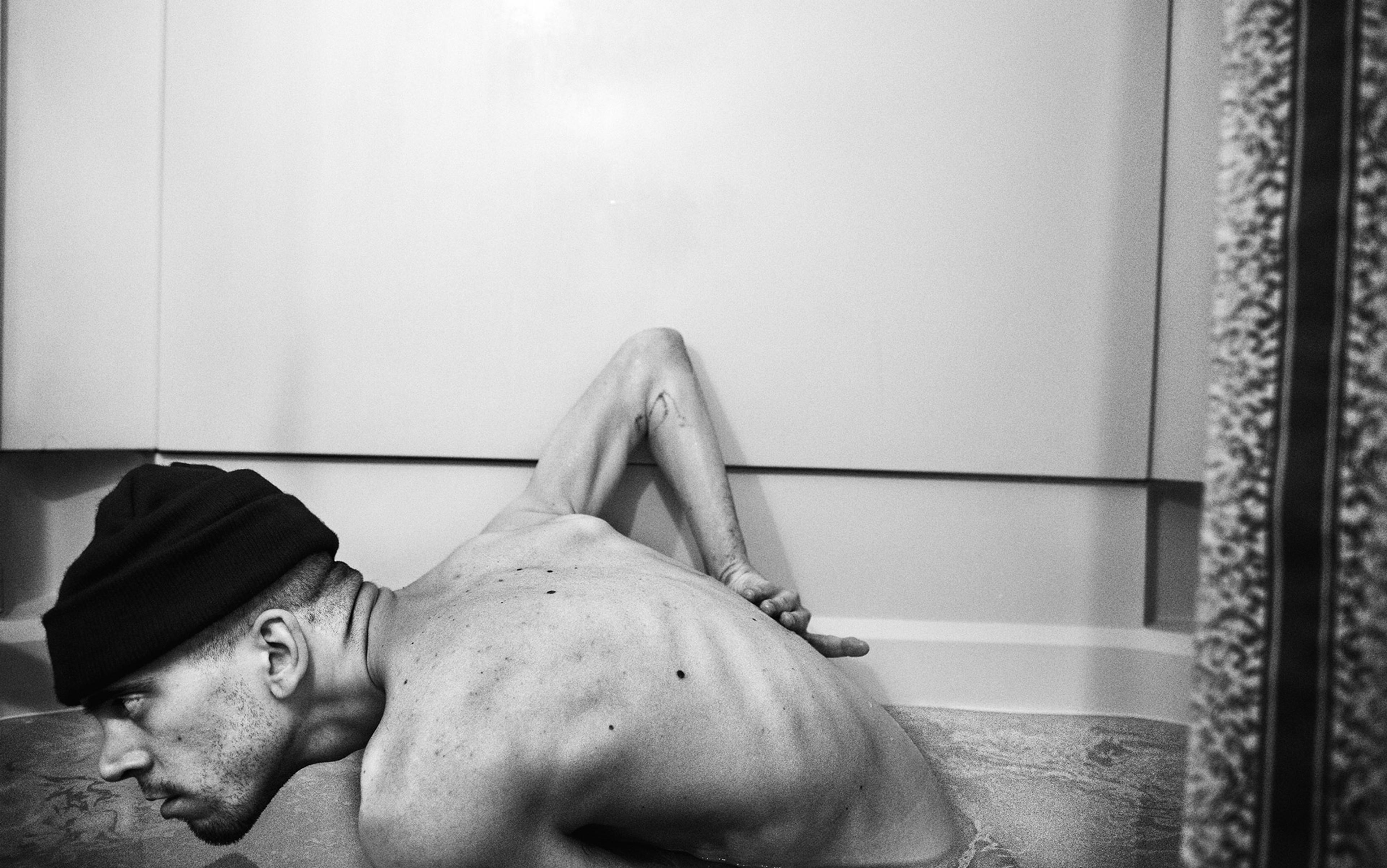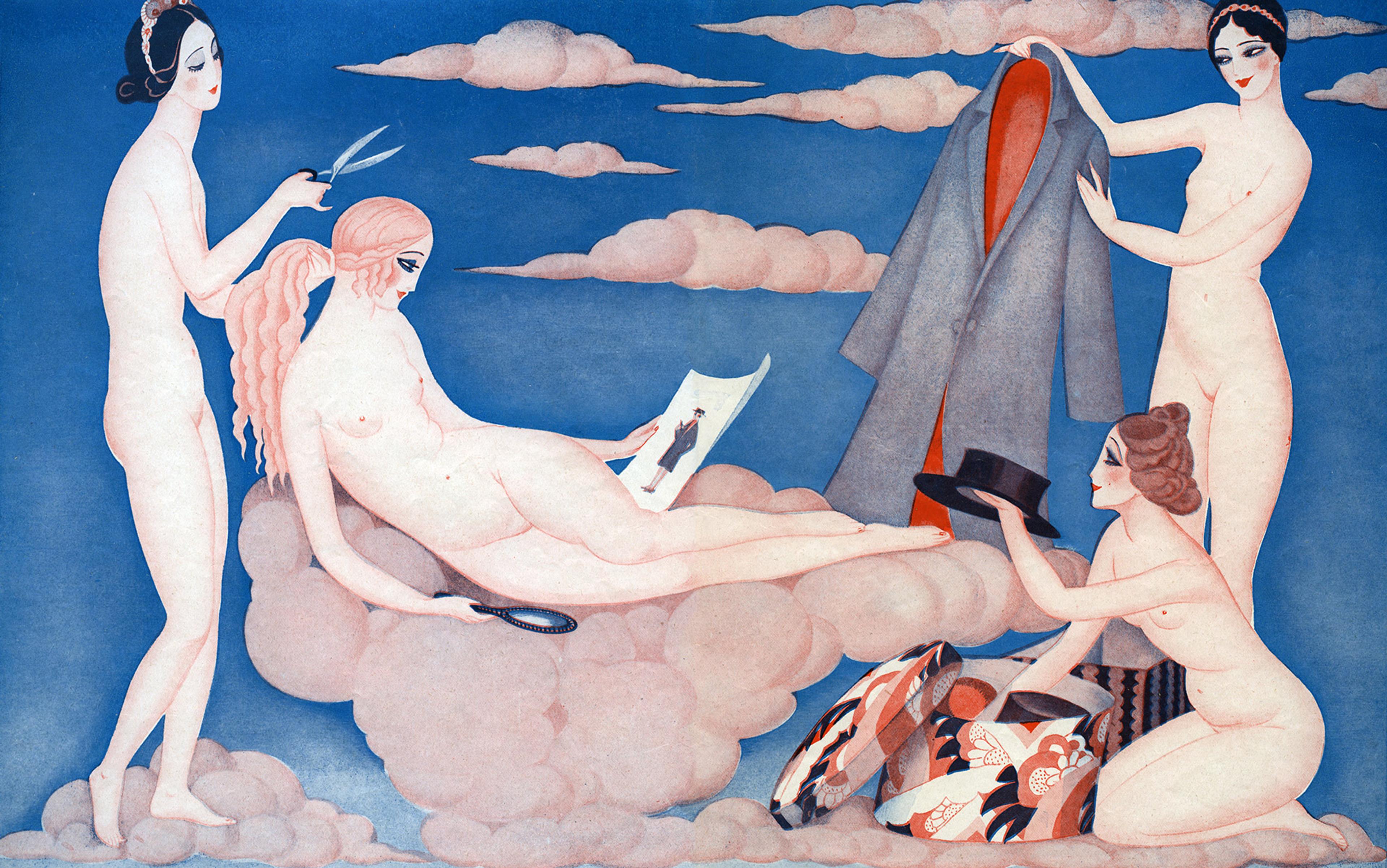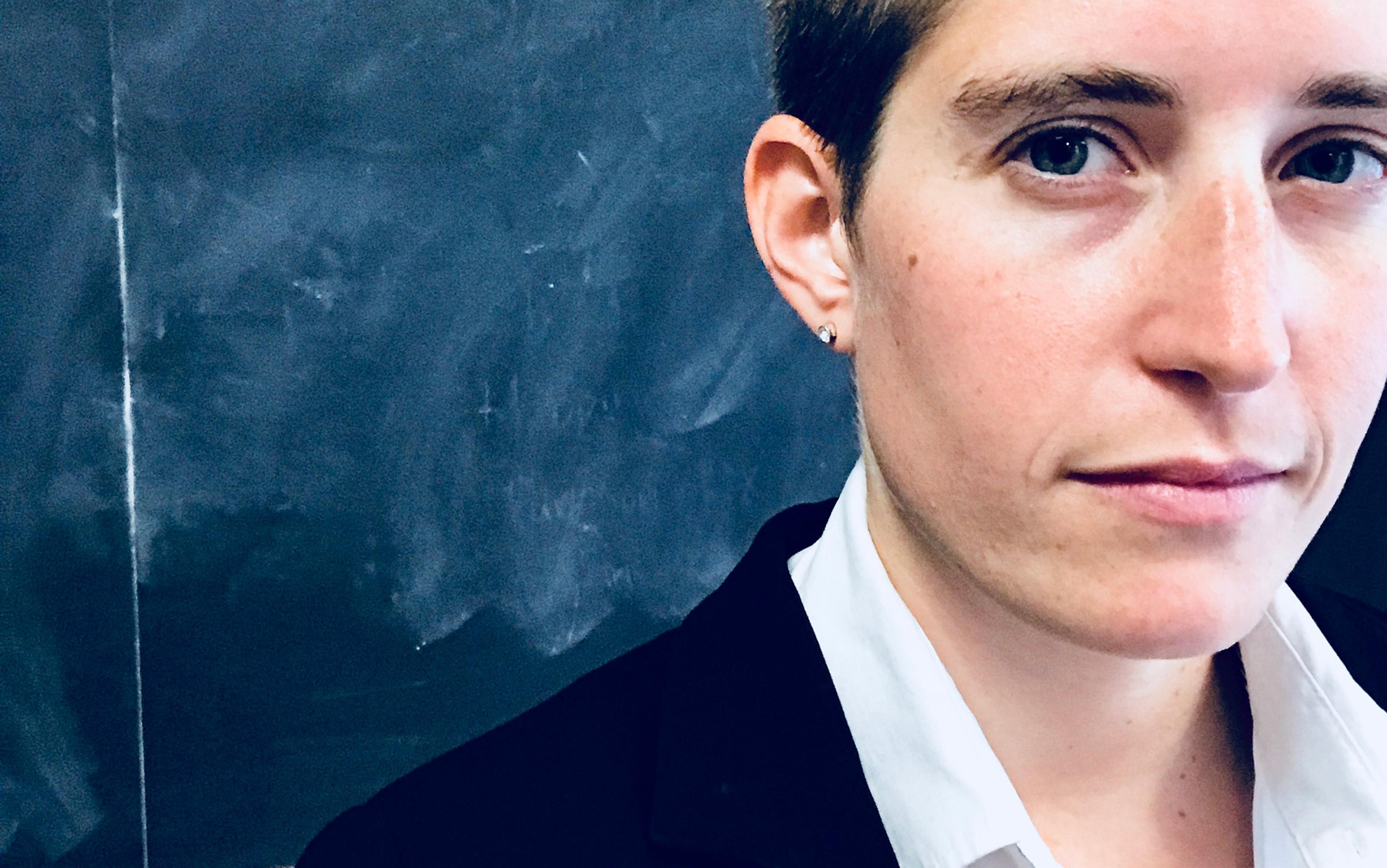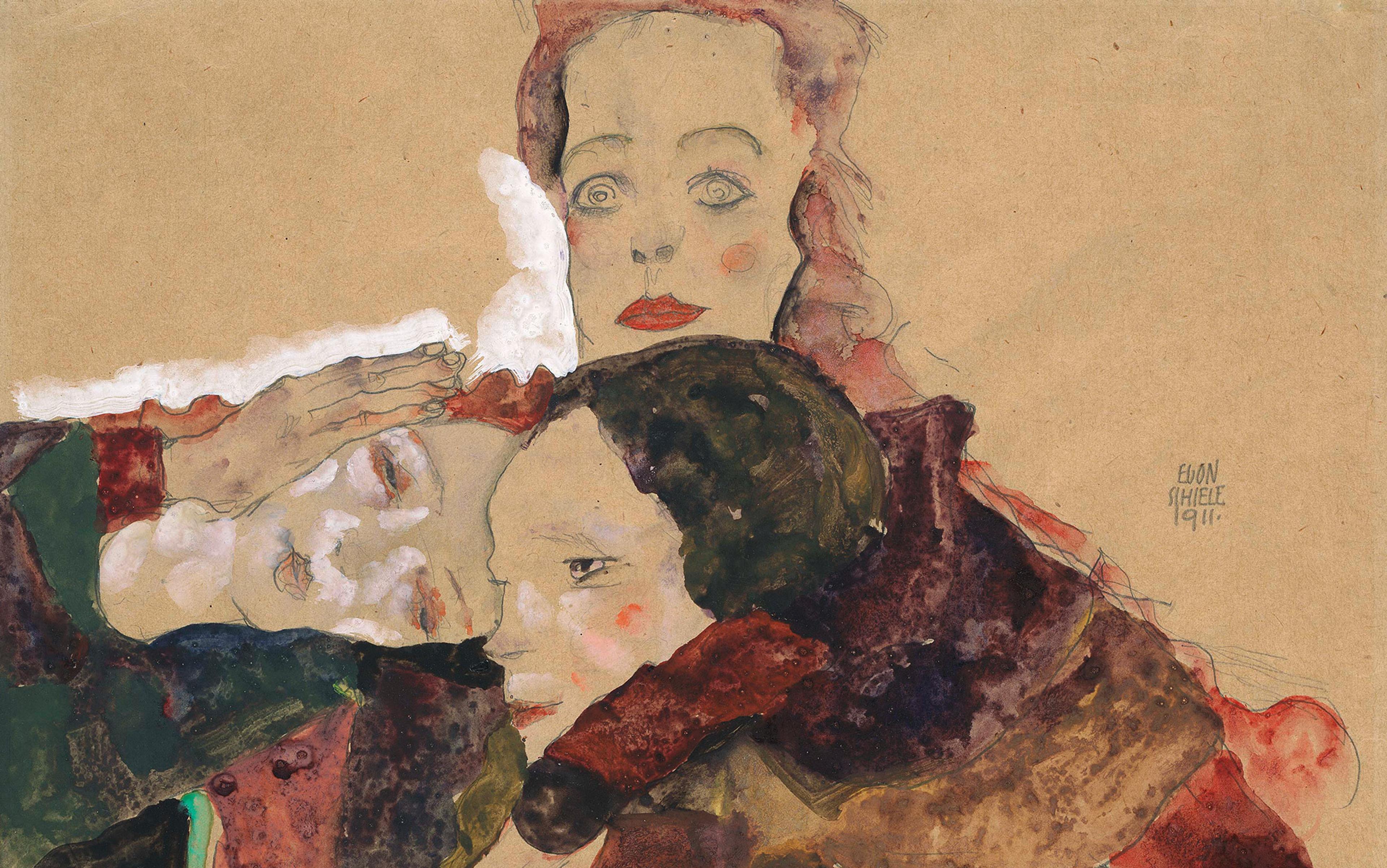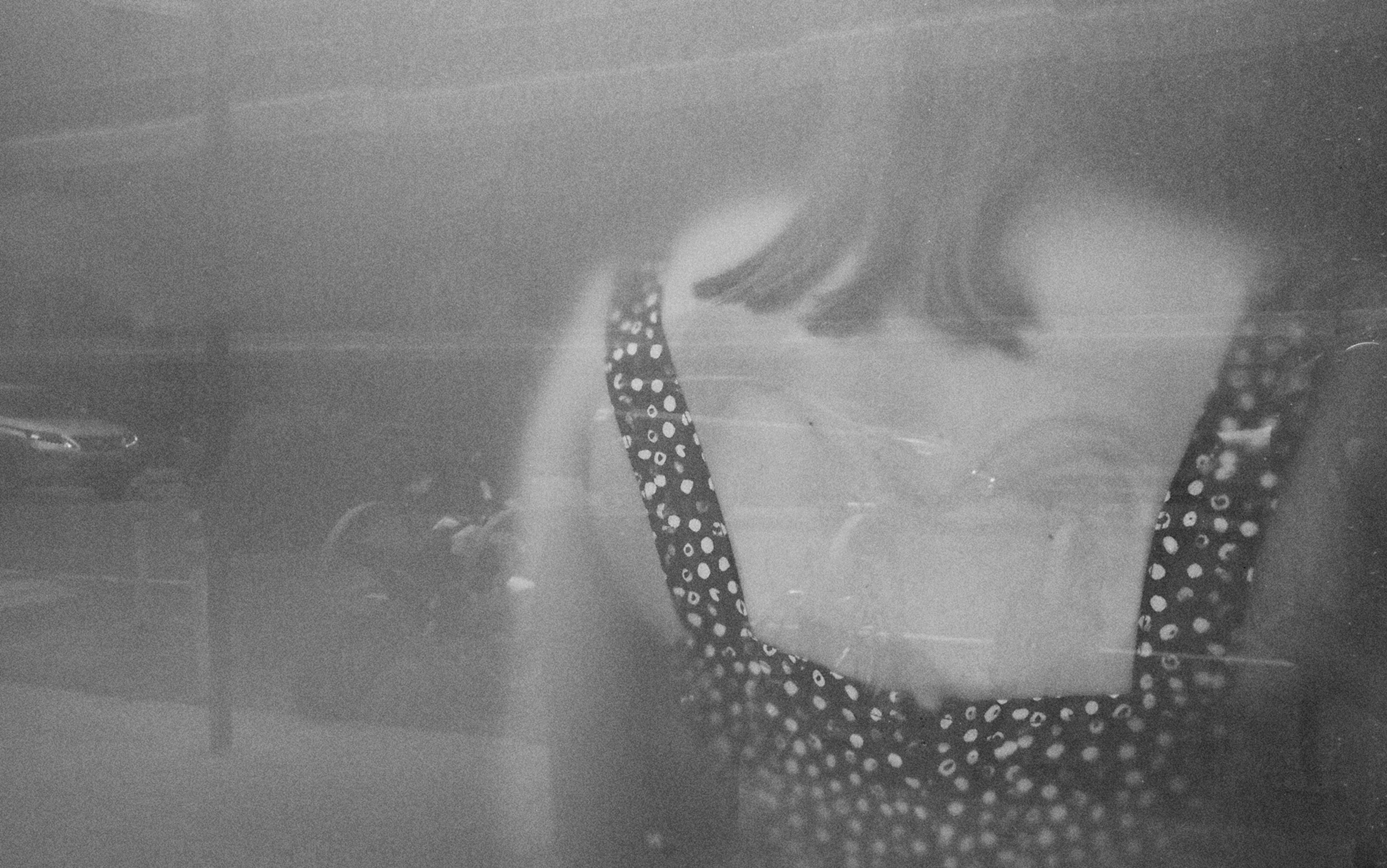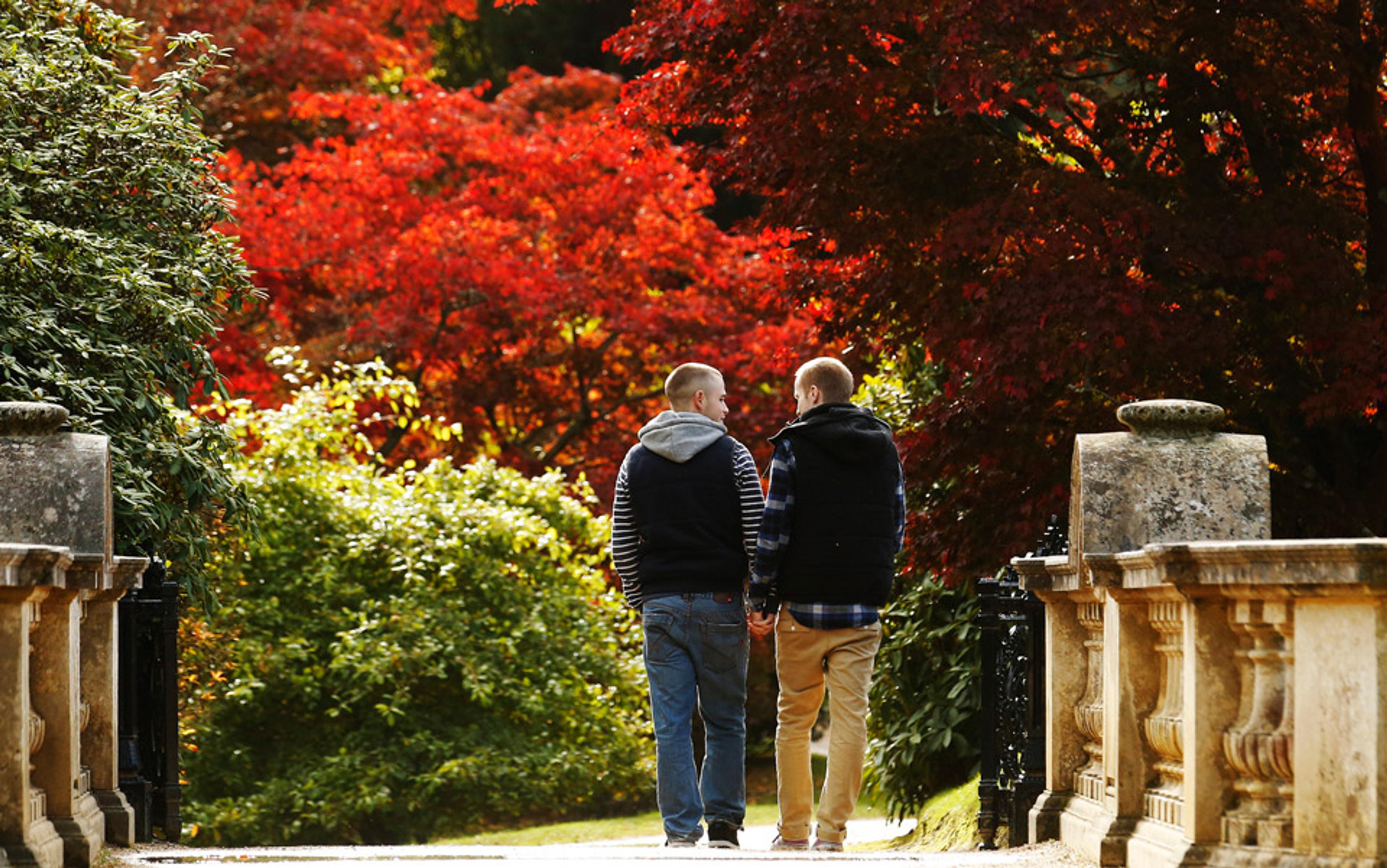I came across Robert McRuer’s ‘crip’ theory in 2015. At the time, I was preparing to write up my experience of touring India with a dramatic monologue that I had written, in verse, on life with my disabled son, Nihal, who died in 2001, and to dramatise our struggles for inclusion. The American theorist’s bold attempt to reclaim this highly charged word ‘crip’ felt at once startling and provocative. Disability politics had always felt challenging to me, never fitting comfortably with my experience: while my son was alive, I’d tended to stay clear of it.
Of course, the first step towards winding back long-held prejudices against disabled people would be to promote positive images of them, to uncover the history of their contributions to society and culture, and re-assert their universal human right to exist: any means, in short, to help them become more visible. In 2010, the political activist and trade unionist Richard Rieser set up UK Disability History Month to do exactly that, on the model of black and LGBT movements. But this is where the similarity with other marginalised groups ends, or ought to. Whereas one’s sex, race or sexual orientation become defined as ‘handicaps’ under systems of patriarchy, racism or heterosexism, impairment is a ‘handicap’ not merely because of disablism, but because it compromises the individuals who bear them, causing pain and suffering. This is irrespective of how far society evolves in its attitudes, or how far technology is effective in closing that gap.
This is not to promote the suffering-helpless-victims-deserving-of-charity narrative. That narrative is something the disability movement has long rejected in displacing the medical model of disability in favour of a social model, so that instead of seeing disability as an individual problem to be ‘cured’ and ‘treated’, the problem is recast in terms of how society and the physical environment have been structured. Thus, if wheelchair users cannot attend a meeting, it’s not because they are in wheelchairs but because no ramps have been provided.
The social model of disability emerged from the deliberations of the Union of the Physically Impaired Against Segregation (UPIAS). Pointedly, it distinguishes between disability and impairment: the first imposed by society as a form of exclusion, the second characterised by physical limitations. Since the UPIAS was mostly made up of individuals with spinal injuries, no attention was paid to mental health issues or learning difficulties. Still, as the disability activist Tom Shakespeare points out, the social model helped to improve self-esteem and build a positive collective identity in disabled people, while ‘in traditional accounts of disability, people with impairments feel that they are at fault.’
Coming up with a workable definition of impairment has itself been (and continues to be) a hot topic. Since the UK government has to arbitrate on matters of disability, perhaps it is best to quote their definition: ‘You’re disabled under the Equality Act 2010 if you have a physical or mental impairment that has a “substantial” and “long-term” adverse effect on your ability “to carry out normal day-to-day activities”.’ But the difficulties of categorisation are implicit in the long list of conditions. As Vic Finkelstein, a disability-rights activist who developed the social model of disability, put it in a paper he presented at an academic conference in 2001: ‘What was paramount was our focus on the need to change the disabling society rather than make us fit for society.’
Yet what about being fit for your own sake, as well as fit for society? In my son’s case we campaigned on both fronts. We battled for schools to admit him which entailed them doing a lot more to become accessible than simply providing ramps; they had to formulate and implement policies of inclusion and jumpstart a clear change in attitudes. At the same time, on the advice of doctors, we experimented with Botox to make his eating more efficient and his muscles less stiff and painful. Nihal underwent operations to prevent his hips becoming dislocated; he wore a variety of splints and braces. In his case, the line between chasing a ‘cure’ or improving his daily wellbeing was often blurred.
Now here was McRuer attempting to go further than the social model of disability by standing in permanent challenge to the assumptions of able-bodiedness: using a demeaning word for disabled people, ‘crip’, not cleaning it up, but holding it up as a mirror to the inadequacies of the notion of able-bodiedness. Riding on the coat-tails of queer theory to share its radical stardust, McRuer argues that, as norms, heterosexuality and able-bodiedness are invisible non-identities, and that queerness and disability can become desirable as visible identities of resistance. But do resistant identities such as ‘crip’ and ‘queer’ limit or expand the potential of the politics of transgression? More: does the act of transgression go far enough to change the material realities of these groups? While a politics that draws it sustenance from identity might initially be empowering, does it take you down a cul-de-sac or along wide, open roads?
At one level, the word ‘crip’ can be used the way I might use ‘wog’, to describe myself and shock outsiders who gasp at the political incorrectness of it. That they could never use the term, or challenge my badge-wearing use of it, gives me a certain degree of perverse pleasure. But I have no desire to reclaim ‘wog’ because the work required to transform racist institutions feels more pressing than reclaiming language, which in any case shakes off its baggage of prejudice and hate once society moves on.
I am grateful to Deborah Cameron, professor of language and communication at the University of Oxford, for pointing out that there are two kinds of reclamation: the kind that makes ‘a currently negative and offensive word neutral in all contexts and for all language users’; and the kind that involves ‘taking a negative and offensive word and using it with a positive meaning, as a symbol of identity and badge of radical in-group membership’. The first category includes descriptors such as ‘black’ and ‘woman’ – both previously pejorative terms that have acquired preferential status. The second includes words such as ‘crip’ and ‘queer’ that would lose all their transgressive power if defanged. ‘Black’ and ‘woman’ have become descriptions whereas ‘queer’ and ‘crip’ are provocations. Their proponents wish them to remain so.
Political movements use words such as ‘crip’ or ‘queer’ to re-examine society’s deeply problematic relationship with the ‘other’. Then, this becomes a politics of transgression rooted in identity. As Cameron explains (via an email interview), it’s transgressive ‘because the meaning of the gesture actually depends on the word continuing to be negative for normies, which allows it to retain some shock value: the in-group meaning riffs off the mainstream negative meaning, and this kind of reclaiming usually entails that only in-group members and close allies can use the word in question without giving offence.’
In order to remain transgressive, these identities must embrace marginalisation
In the gay community, there are pockets of resistance to the use of ‘queer’ as an identity, although it is hard to estimate the size of it. Cameron reminds us that the movement to reclaim ‘queer’ has been going on for 30 years, and wonders whether ‘its older use as a homophobic slur will ever be completely superseded’. Below-the-line discussions on the use of ‘queer’ reveal varied and inevitably heated views. Some find it a harmful term because of its long history of abuse against gay men, although the general consensus is that it is ‘important to have a word that encompasses all non-straight, non-cisgender identities. So far, the word that’s caught on is “queer”. It is clearly not favoured by everyone, but no one who objects to it … suggested a similar all-encompassing term.’ It is precisely this ‘all-encompassing’ aspect of ‘queer’ that led the journalist Jenna Wortham in The New York Times Magazine to ask: ‘When Everyone Can Be ‘Queer’, Is Anyone?’ (2016).
Wortham argued that ‘“queer” has come to serve as a linguistic catch-all for this broadening spectrum of identities’, so much so that it can be claimed by anyone identifying as non-heteronormative. She has a point. Facebook users can now write their own gender description but as many as 71 gender and sexuality options have been counted in the past. A recent coinage currently doing the rounds is ‘sapiosexual’, meaning that the person is attracted to intelligence before gender. Queer politics has evolved almost unrecognisably since the Queer Nation Manifesto was handed out at the Pride march in New York City in 1990, addressed to ‘brothers and sisters’ – a gender binary that today would seem inconsistent with a ‘queer’ identity.
Hugh Ryan, founder of the Pop-Up Museum of Queer History, worries that the catch-all phenomenon that Wortham identifies effectively depoliticises the word. As he put it in the article ‘Why Everyone Can’t Be Queer’ (2016) for Slate magazine, ‘Queer is the battle cry of deviancy,’ and, therefore, by definition exclusive. He goes on to say: ‘When we remove the focus on stigmatisation from the word queer, we evacuate it of the only thing that made it a coherent identity in the first place.’ According to Ryan, there might come a time when gay men and lesbians will no longer be considered deviant and would, therefore, no longer be queer. In Crip Theory (2006), McRuer, quoting the American theorist David Halperin, likewise argues that the coherence of the term ‘crip’ relies on its ‘positionality’, the way it functions ‘oppositionally and relationally … as a resistance to the norm’ (ironically setting up the very binary that both theories disdain). This contestation and tension is central to retaining the political power of the word. In order to remain transgressive, these identities must embrace marginalisation.
Of course, newly politicised movements often struggle with the conflicts inherent between marginalisation and mainstreaming. There is a sense of strength in numbers: the larger the group that is disempowered, the stronger the argument for rights; the more significance they have as a vote bank, and the more muscle they can exercise as a consumer group. Indeed, there are commentators who take the line that ‘we’re all disabled’, because the perfect body is a myth; because, over time, ageing is likely to disable most of us, and because the line between illness and disability can be blurred, often deliberately so, by some disability activists. However, an argument that promotes acceptance on the basis of universality must then relinquish its status and pride in being ‘other’.
Of the two terms, ‘queer’ has the longer history, having first been adopted in the 1970s; ‘crip’ theory came along in the 1990s. Queer has been the more theorised and given the stamp of respectability (although respectability is death to transgressive identities) by heavyweights such as the American philosopher and gender theorist Judith Butler. McRuer extends Butler’s argument about the performative character of heterosexuality (the norm that requires constant repetition to shore up its unstable hegemony), to argue that able-bodiedness is also a performance. There is some validity to his notion of ‘compulsory able-bodiedness’ – a term he adapts from Adrienne Rich’s critique of ‘compulsory heterosexuality’ – ‘through which lesbian experience is perceived on a scale ranging from deviant to abhorrent, or simply rendered invisible’.
For McRuer, compulsory able-bodiedness ‘repeatedly demands that people with disabilities embody for others an affirmative answer to the unspoken question, Yes, but in the end, wouldn’t you rather be more like me?’ This might explain why a deaf person chooses to wear an almost invisible hearing aid because it enables them to pass as hearing. It is an attempt to perform able-bodiedness. For a range of disabilities, however, it is not possible to pass or perform able-bodiedness, regardless of societal compulsion.
McRuer complains that most people, primed by the rise of queer movements, now agree that ‘ways of being heterosexual are culturally produced and culturally variable’, but they will not extend that same understanding to able-bodiedness. I am one of them. He attacks Norah Vincent, a lesbian journalist, for writing in Salon in 1999: ‘it’s hard to deny that something called normalcy exists. The human body is a machine, after all – one that has evolved functional parts … This is science, not culture.’ Although I might substitute the word ‘normalcy’ with ‘biology’, it’s hard to quibble with the basic truth of Vincent’s statement. McRuer’s attack on her is reminiscent of the attacks by some trans activists on feminists who argue that there are important biological factors that underpin the claim of women as a separate sex.
Disability, unlike the queer demographic, cannot be exploited by or absorbed into corporate capitalism
Although heterosexuality can be seen as a cultural construct, able-bodiedness has a hard material reality: there is a connection between form and function. The fashion to disregard biology has been taken to absurd extremes. What began as a necessary critique of the way that social constructs justified their oppressive power on the basis of biology has led to the argument that everything is a social construct – even sex and an able body. To me, the idea of performative identities also suggests choice, even if ‘chosen’ under social pressure, and, while sexuality could be (at least in part) subject to choice, disability is not (usually). When McRuer decided to ‘come out crip’ at an AIDS conference, self-identifying as HIV-positive when he was not, he was performing disability, ie adopting an identity not based in the reality of impairment.
McRuer argues that ‘orderly, coherent (or managed) identities’ are the essence of neoliberalism, and that resisting them must be expressed through embracing the disorderly identities of queerness and disability. He argues that neoliberalism demands compulsory able-bodiedness and compulsory heterosexuality. While I agree that disability is a net loss for neoliberalism, this is not true of ‘queer’ and the multiple ‘other’ identities of LGBT+ communities that provide commercial opportunities for new markets. It was, after all, a Conservative government that legalised gay marriage in the UK. As Deborah Cameron told me: ‘I’d say middle-class gay men have been seen as a desirable market for decades, and now LGBT people can marry and have families there’s even more money to be made from anything from gay wedding/anniversary cards to the exploitation of women in the global South as surrogates for gay couples.’ Wortham makes a similar point: ‘Increased acceptance of queerness has only led to increased commodification. Every June, the month of most gay-pride celebrations, companies like Netflix, McDonald’s, Apple, Salesforce and Walmart spend tremendous amounts of money to include their branded floats in the parades.’
Disability cannot be similarly commodified, not least because the equipment needed by disabled people can be so bespoke that there are no economies of scale. It is precisely because disability, unlike the queer demographic, cannot be exploited by or absorbed into corporate capitalism (with the notable exception of some sectors such as mental health, where the rise of antidepressant medication has meant huge profits for Big Pharma) that McRuer believes that ‘cripping that future’ – that is, imagining a world in which disability is both ‘possible and desirable’ – might be a useful political strategy to oppose corporate capitalism and globalisation.
Coalescing around a particular group identity can feel liberating. It attracts attention to your cause, and ensures that you’re not an adjunct to someone else’s. It validates your subversion of mainstream narratives, and authenticates your point of view. Speaking on your own behalf can be deeply empowering, just as belonging to a community of people making the same demands is hugely uplifting. The slogan ‘nothing about us without us’ became widely adopted by the disability movement. Southall Black Sisters (SBS), an activist and support group in West London for women escaping violence, has been my political home for 30 years. Our internal debates have fine-tuned my political understandings and given me the confidence that comes from knowing that I am not alone in my particular critique of society.
Along with agitating for better representation, the drive to acknowledge social diversity and to campaign for the equality of disempowered minorities are important political aims. The first Disability Pride Day was celebrated in Boston in 1990, with disability parades held across the US since then. In the UK, the first Disability Pride march was in Brighton in 2016. For many disabled activists, choosing to parade their disability rather than hide allows them to counter the shame they’ve been made to feel and the discrimination they’ve faced. Today, the neurodiversity movement is thriving, with many activists on the autistic spectrum positively identifying as ‘Aspies’. At the extreme end of re-framing one’s identity, Zainab Al-Eqabi, an Iraqi woman with an artificial leg, delivered a TEDx talk in 2014 which she said: ‘I have a huge love for my disability … It is the best thing that has ever happened to me.’
But not all disability activists are comfortable embracing this identity as a political statement. Tom Shakespeare wrote in 2010:
it is harder to celebrate disability than it is to celebrate Blackness, or Gay Pride, or being a woman. ‘Disability pride’ is problematic, because disability is difficult to recuperate as a concept, as it refers either to limitation and incapacity, or else to oppression and exclusion, or else to both dimensions.
Here we come up against the limitations of identity politics: to wit, sharing an experience is no guarantee of coming to the same political demands.
This is exactly the problem with reading ‘crip’ through ‘queerness’. It obscures important differences. Attempting to bolster your own political case by drawing parallels with other minorities can become untenable because different histories of discrimination and different material realities are in play. There was the case in 2002 of the deaf lesbian couple in the US who chose a deaf donor in order to have a deaf child because, as they told The Washington Post, they saw deafness as a cultural identity, not a disability. Defending their decision to choose a deaf donor, they drew on an analogy with race, positing a hypothetical couple’s right to choose a black donor, regardless of the difficulties that child might face in a racist society. In my view, that is not a comparison that holds water. A deaf child will always face significant challenges in being part of mainstream culture, apart from missing out on the sheer joy of music or birdsong, while a far less racist society is something that we can strive to achieve. It also suggests that hearing children will reject their parents’ culture – a fear that could stop migrants from having children – but I have seen such children happily negotiating both worlds.
Some disability scholars, such as Kirstin Marie Bone of the University of Alabama, have also criticised crip theory for positioning itself as a subset of queer politics, thereby further silencing disabled voices. The same might be said about the erasure of lesbians, as a category, under the broader label of ‘queer’. Even lesbians who identify as queer because trend-conscious activism or even internalised homophobia have led them to see lesbians as ‘unfashionable, uncultured homebodies’ complain that ‘in [Washington] DC, as in most places, queer parties that get labelled without a gender often default to gay men’, as Christina Cauterucci wrote in Slate in 2016.
Queer activists and scholars often fail to support Asian women’s internal battles against religious conservatism
Crip defaults to physical disability in just the same way. People with physical disabilities have been ‘at the top of the disability hierarchy’, according to activists such as Mark Sherry, a sociologist at the University of Toledo in Ohio. They’ve been the main drivers of change – which accounts for the wheelchair becoming the universal symbol of accessibility. Nor does ‘crip’ tackle the vulnerability of disabled women to sexual abuse or violence, or the problems faced by black, Asian and minority-ethnic disabled people in relation to immigration policies, police racism and the like. That’s why Sherry believes that most disabled people reject ‘crip’: because it ‘masks enormous embodied, classed, gendered, sexualised, racialised privilege’ and doesn’t speak to their lived reality.
There is a similar disconnect between ‘queer’ and the communities that lay claim to the label by virtue of not being white, middle-class, heteronormative cis-men. This bête noir draws all the fire, while regressive trends and power imbalances among disempowered minorities go unchallenged. It explains why queer activists and scholars often fail to support Asian women’s internal battles against religious conservatism: because ‘Muslims’ are a besieged minority.
Earlier this year, the Parkfield Community School in Birmingham faced months of noisy protests outside its gates from Muslim parents opposed to the teaching of an LGBT equality agenda. The protests were orchestrated by individuals involved with StopRSE, a campaign set up to oppose the relationship education due to become compulsory in UK primary schools and the sex education due to become compulsory in secondary schools in 2020. This June, SBS attended a meeting organised to express solidarity with the embattled school head. Yet solidarity failed to arrive from those quarters where it might be most expected. A letter from LGBT+ supporters published in the Independent newspaper in September argued that they could not support the school in question – despite supporting relationship and sex-education (RSE) teaching in general – because ‘the wider embrace of LGBT+-inclusive RSE as the poster-child for the implementation of “Fundamental British Values” suggests a colonial “civilising” attitude towards Muslim communities, and contributes to a harmful and inaccurate stereotype of an uncivilised and intolerant Muslim culture’. The letter failed to notice that the protests against sex-ed teaching were orchestrated by Islamic fundamentalists using those very Muslim parents to further their own deeply regressive agenda.
A politics of transgression, rooted in identity politics, with virtually no reference to class, no real analysis of power, and no attempt to differentiate between discrimination and exploitation is bound to be limiting. Besides, collapsing radical politics into a struggle for self-identification is a form of rebellion that slips easily into the folds of neoliberalism. The flattening effect is succinctly illustrated by Amandla Stenberg, The Hunger Games (2012) actor who came out as bisexual in 2016, telling reporters: ‘I definitely believe in the concept of rebellion through selfhood, and rebellion through embracing your true identity, no matter what you’re being told.’ Rebellion here is reduced to reshaping your individual self as an act of transgression, rather than looking at transformation of institutional structures.
In her essay ‘Globalising Capitalism and the Rise of Identity Politics’ (1995), the sociologist Frances Fox Piven at the City University of New York goes directly to the central flaw in identity politics:
Class politics, at least in principle, promotes vertical cleavages, mobilising people around axes which broadly correspond to hierarchies of power, and which promote challenges to these hierarchies. By contrast, identity politics fosters lateral cleavages which are unlikely to reflect fundamental conflicts over societal power and resources and, indeed, may seal popular allegiance to the ruling classes that exploit them.
Even where there is an attempt to open up the cul-de-sac of identity politics through intersectionality or fluidity of borders, the reference point remains ‘identity’.
Solutions for solidarity politics don’t have to be found within the narrow confines of identity. If outsider clout is what queer and crip activists are seeking, the question that follows is whether they are putting this clout to any transformative effect. In her essay ‘Trapped Behind the Glass’ (2017), Bone would argue not. Since crip theory first emerged, she says, ‘there have been few major legal advances since the Americans with Disabilities Act in 1990 – the most significant being the Patient Protection and Affordable Care Act 2010, which protected those with pre-existing conditions and removed healthcare caps.’ Back in the 1960s, when women won the right to abortion in the UK, it was seen as transgressive, as a threat of family life, and it led to a change of women’s material reality. Today, such a campaign would likely get bogged down in discussions of whether or not it was trans-exclusionary.
Identity politics might be the starting point of radical politics but it must not be the end point. It can be the trigger but not the goal. Much of queer and crip theory insists on its marginal status as part of its subversive appeal. But subversion to what end, if not to change the system? Therein lies the fatal contradiction: any reduction in inequality (and total equality is possible only with system change) and any increase in social inclusion would undermine the marginal status to which these theorists are so wedded.
The politics of transgression uses shock to question our values and beliefs. But because it registers low on the Richter scale of societal transformation, it effects minor damage that requires redecoration, not the landslide change that demands complete rebuilding.
